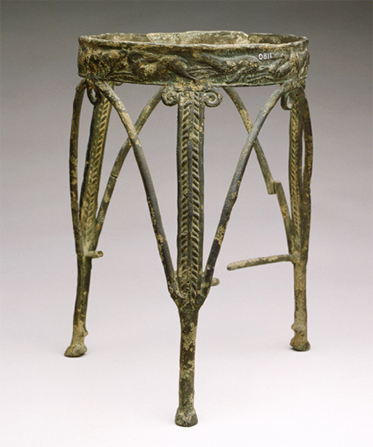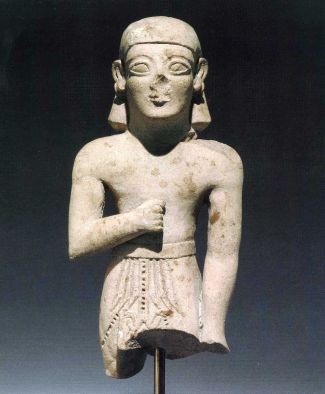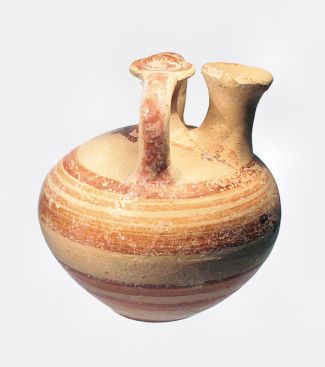Greece, a history of Greek art in The Dark Ages (1250-800 B.C)
The King of Mycenae and Argos, Agamemnon, led the war against Troy in the Iliad and the Odyssey. The myths of this period were a continuous theme for centuries in Greek, Roman and Western European art. The epics themselves were recited but not written
down until about 700 B.C. The destruction of Troy occurred around 1250 B.C. according to archaeological evidence. Shortly thereafter (ca. 1100-1000), the Dorians from northern Greece invaded the south. The Dorians
drove the native population to the islands of Asia Minor. The period after the Dorian invasion is sometimes known as the Dark Ages for ancient Greece. But the Dorian's architectural ability and refined sense
of design had a strong impact on Greek pottery and sculpture.

Tripod, ca. 1100 B.C., 37.49 cm., Cypriot; this was a design much imitated throughout the Mediterranean, the top band has images of goats being chased by dogs.Metropolitan Museum of Art, New York, NY.

The bull symbolized strength, political and religious power in Minoan society. The Minotaur, found depicted in frescoes and pottery, had a man's
body and bull's head. According to myth, it was killed by Theseus. In later myth, Neptune sends a Cretan bull, whom Herakles must fight as one of his labors. Herakles fights a bull again to win Deinira as his bride.
Achelous, river god, takes on different forms to fight Herakles for Deinira's hand. One of the forms is a bull.

Man and centaur
statue; ca. 750 B.C.; bronze; 11.10 cm.; Metropolitan Museum of Art.

Goblet, buff-ware, decorated with geometric patterns and shells,
Late Bronze Age, 1200 B.C.; 19.4 cm.

Votary statue, Limestone, Cyprus; 7th century B.C.;
with earrings; 33 cm.

Stirrup pot; ceramic, decorated with spirals; Late Bronze Age, ca. 1200 B.C.; 9.8 x 9.5 cm.; Helios Gallery, London.
|